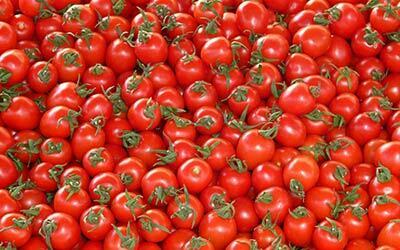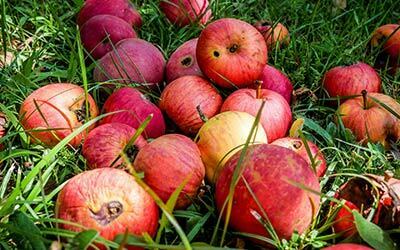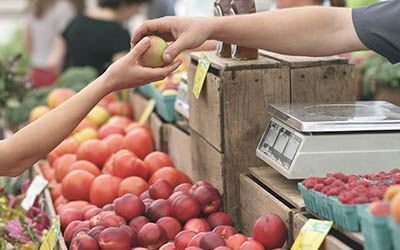ECOMALOPOLSKA – stop wasting food
How much food do we waste each year? Why do so many food products end up in the bin? What can we do to prevent food waste?
According to 2006 figures , as much as 9 million tonnes of foodstuffs end18 billion plates full of food end up in the landfill. up in rubbish dumps in Poland every year. Assuming that an average, filling and wholesome meal weighs about 500 grams,
18 billion plates full of food end up in the landfill.
Who is responsible for producing food waste?
According to a report by the Federation of Polish Food Banks:
- 53% of food waste is produced by consumers, i.e. us
- 19% is generated by processors
- 11% producers
- 12% catering
- 5% shops

Research carried out in 2019 shows that as many as 42% of Poles admit that they happen to throw away food.
We most often throw away bread (23.7%), followed by cold cuts (12.8%), fresh fruit (12.6%), vegetables (10.9%) and milk (9.8%). The main reason why food in Polish households ends up in the bin is that it spoils. Next in order are overlooking the expiry date, preparing too much food and having no idea how to use an ingredient. In terms of the amount of food thrown away, Poland ranks very high, 5th in Europe. A family of four, for example, loses as much as PLN 2,500 in this way.
What habits of Poles and Polish women cause so much food to be wasted? What can we do to change these habits? Here are some tips:
LET’S NOT CONFUSE TERMS, LET’S DISTINGUISH BETWEEN THEM!

Best consumed BEFORE =/= Should be consumed DO
A report by the Federation of Polish Food Banks showed that as many as 64% of Poles do not distinguish between the concepts of ‘best consumed before’ and ‘should be consumed by’ and treat them synonymously.
The information best before is referred to as the so-called minimum durability date. Minimum durability means that it is not final. Products after this date do not spoil and can still be consumed, but we must take into account that the product’s consistency, colour, taste or smell may change. The term “best before” is most often used for cereal products: flours, pasta, groats, but also rice, coffee, tea, some sweets, spices, sugar, salt and others.
Should be consumed by means of a ‘use by’ date, after which eating the product may cause dangerous health consequences. This phrase usually refers to fresh products such as meat, fish, juices, dairy products, delicatessen products. Due to the absence or insignificant amount of preservatives, these foods have a short shelf life, which must be strictly observed. That is, it should be consumed at the latest on the expiry date.
BUY BREAD WISELY

Of the Poles surveyed, 23.7 per cent indicated that not only do they buy bread in the shop most often, every day or every other day, but they also throw bread away often or sometimes. This is due to the fact that we buy new bread before we manage to eat the bread bought the day before. It is worth remembering that bread can be frozen. If you happen to buy too much, freezing even half a loaf can save you from throwing it away. The most important thing is to estimate how much you actually need.
MAKE A SHOPPING LIST

61.1% of Poles surveyed go shopping without a list. Making a list before going to the shop helps us to prevent buying excess products, products that we don’t need at the moment and which may spoil.
DO NOT BUY TOO MUCH IN ADVANCE
72.7% of respondents buy spontaneously and 61.8% buy to stock up. Back-buying should not involve products with a short expiry date or which cannot be frozen. If you do buy to stock up, make sure you store products properly, keep an eye on the expiry date and take advantage of the option to freeze products. It is more practical to plan your meals over several days and not to shop for stock.
DO NOT ALWAYS LOOK AT PRICE WHEN CHOOSING PRODUCTS

92.4% of surveyed Poles are primarily guided by price when choosing products. Of course, the price of the product is important, but it is also worth paying attention to other factors, such as the expiry date. This will prevent us from buying products which we will not have time to eat before the expiry date, and which we will eventually have to throw away.
SMALL, OUT-OF-SHAPE VEGETABLES AND FRUITS ARE ALSO GOOD PRODUCTS
When buying fruit and vegetables, 74% of Poles surveyed rarely or never reach for products that are not perfectly shaped. Most small, out-of-shape vegetables or fruit are doomed to be thrown away already in the shop because of their appearance. It is worth remembering that these products are just as wholesome and wholesome as their perfectly shaped counterparts.
FOOD MILES – food waste and environmental impact
When buying food, we should also take into account the Food Miles. Food Miles are the distance that food travels from the production site to the consumer, i.e. to us. By learning about the Food Miles of different products, we become aware of the environmental impact of food and its ingredients. Throwing away food is not only a waste of money. Food production affects the environment by generating a water and carbon footprint. The products we buy often travel thousands of kilometres before they reach the shop shelf. Wasting food wastes the water, energy and fuel needed to produce and then transport it.
Why limit Food Miles, or food kilometres?
- the more kilometres our product has to travel from the place of production to the shop where we buy it, the more petrol is burnt, the longer the transport, the greater the emissions into the atmosphere;
- imported fruit and vegetables are often cheaper, look nicer and are also available at ‘unnatural’ times of the year, e.g. strawberries in January. However, their attractive appearance can often be the result of preservatives, genetic modification and ‘industrial’ production methods. The more food miles, the more time has elapsed between harvesting and consumer purchase of the product – so the food has lost its freshness and much of its nutritional value;
- food miles make countries dependent on importing food that can often be produced locally;
- the fewer food miles, the easier it is to check exactly where the food comes from and to monitor the entire production process.
What can we do to reduce Food Miles?
- pay attention to the country of origin of the products you buy and, if you can, choose products from Poland
- Buy seasonal products;
- Shop close to home;
- Ask where the food you are selling comes from if there is no such information on the shop counter;
- grow your own herbs, such as basil, thyme and mint, so that you can use your own crops all year round.
Why buy locally?

- in the season from spring to autumn, fruit and vegetables bought from local producers can be on sale even hours after they are harvested; by buying locally, we acquire fresh, wholesome produce;
- by buying locally, we strengthen the local economy.
***
Try to perform!
The attached infographic provides information on the Food Miles of selected products. This is an estimate, taking into account only the distance the product travels from the production site to the shop. It does not, however, take into account the distance the product travels from the shop to our homes, or, for example, from the harvest site to the processing plant. Nevertheless, these values give us an estimate of how many food miles our meals generate.
As a homework assignment, students are encouraged to look at the values presented, to reconstruct with their household the composition of their meals from one selected day, including drinks, and to calculate together the food miles of the whole family’s menu.
If a product not included in the infographic is used, its food miles can be checked using the calculator at http://www.foodmiles.com/ . If the products used are from Poland, for the purposes of the exercise their food miles value should be set at zero.

***
The project was carried out with the financial support of the Malopolska Region.










